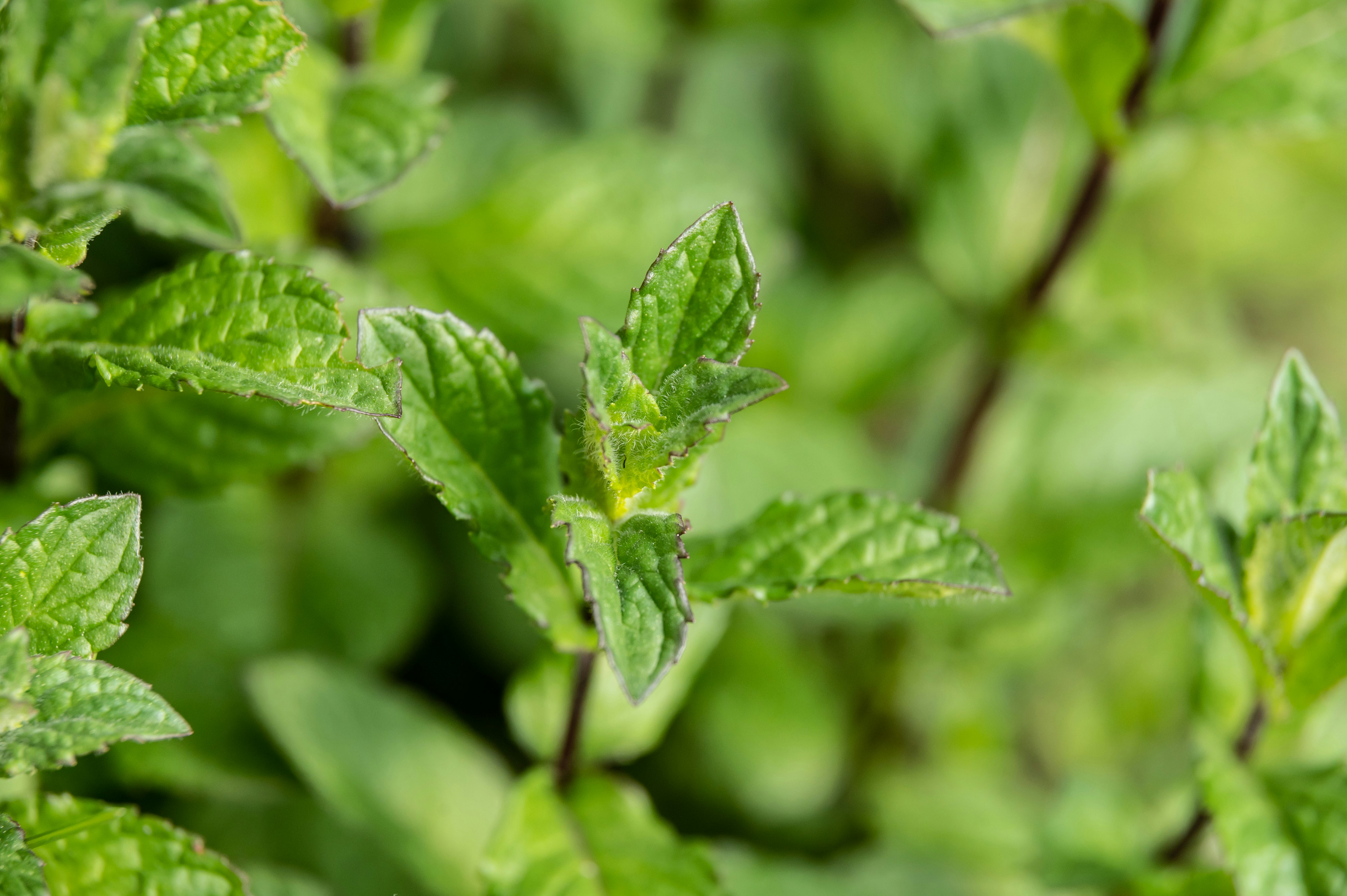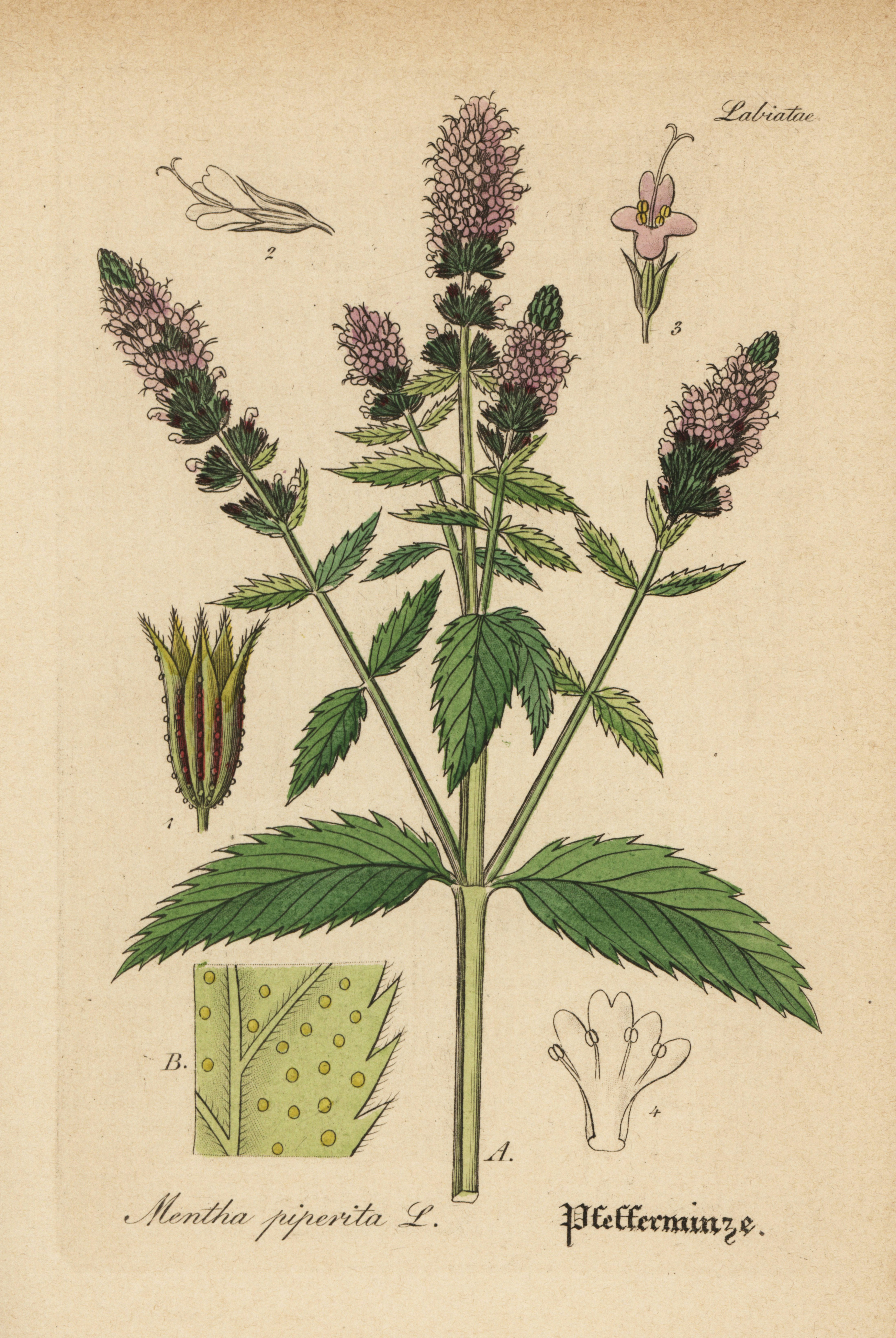
Candy canes are by any measure a strange sweet. Brittle and unwieldy, theirs is a shape of candy you only see once a year — to signify ... a shepherd's crook? A crutch to get you through the loneliest season? Or just a convenient shape to hang from a fir branch?
Stranger still is the flavor: peppermint. This invigorating tidal wave of a flavor is as much a sensory experience as a taste — one that defies the usual holiday hat trick of sweet, fatty, and cinnamon-y. What is the secret to this beloved treat? You can find an answer in its chemical composition, a receptor on our tongues, and evolutionary tactics.
What makes peppermint taste minty?

Peppermint (Mentha piperita) is actually a hybrid plant of two other kinds of mint: watermint and spearmint. Its dark-green, pointed leaves can be used freshly picked, dried, or made into a flavorful oil.
But beneath the surface, the most important component of peppermint is menthol, an organic compound found in mint plants. Peppermint is made up of 40 percent menthol, which is largely responsible for that sweet, slightly spicy taste and cooling sensation in peppermint-flavored sweets and products. (Menthol can also be made synthetically. )
While peppermint is often used as a flavoring in cooking and baking, menthol can be used on its own in medicinal products, like cough drops and nasal inhalers, or added to cosmetics and cigarettes.
Peppermint on the tongue

Peppermint — and the menthol it contains — is synonymous with a refreshing taste and a cooling sensation thanks to chemesthesis, or the touch, pain, and thermal sensations brought on by environmental chemicals.
“The cool of mints and menthol occurs because these compounds stimulate a particular receptor on the tongue called TRPM8,” Danielle Reed, associate director at the Monell Chemical Senses Center in Philadelphia, tells Inverse.
TRPM8 is part of the TRP family, a collection of taste receptors that respond to the whole spectrum of temperatures, from warm or cool to painfully hot and painfully cold. TRPM8 is responsible for cooling sensations.
What’s going on here is an illusion. Receptors can’t actually differentiate between whether you’ve just eaten a mint and your temperature is normal or you’ve popped an ice cube into your mouth and now you’re cold. Either way, they tell your brain, “I’m cold,” and that’s why you feel a cooling sensation.
Anyone who’s used mint shower gel will know you don’t have to eat mint or menthol to “feel” these cooling effects and that’s because the same trick of the senses works elsewhere.
“These receptors are also on other body parts,” Reed says. “Especially mucous membranes, which gives that delightful feeling of cooling, too.”
There are varying degrees of this minty-fresh experience.
Some people simply have more TRPM8 receptors than others, supertasters who “are thought to have more taste buds on their tongue, possibly as many as 14 times more than non-tasters,” Charles Spence, professor of experimental psychology at the University of Oxford, tells Inverse. These supertasters “are more sensitive to certain bitter-tasting compounds, other tastes, and oral texture,” he says. “It would be reasonable to think they might have a stronger cooling perception from menthol.”
That refreshing peppermint feeling

The way each of us experiences taste tends to be subjective, but many people associate mint and menthol with feeling fresh and clean, especially when it’s used in toothpaste and cosmetics.
“Small amounts of menthol can be used topically to provide a fresh feeling in skin care products,” says Kelly Dobos, an adjunct professor of cosmetic science at the University of Cincinnati. She says the reason for this is that it can act as a signal of efficacy.
Menthol certainly has several properties that could explain the link. One 2000 study suggests that the effect of menthol on oral and nasal cold receptors could satiate thirst, ease breathing, and help us to feel more alert.
“Menthol and eucalyptus oils in higher concentrations can also be used in topical pain relief creams along with massage to soothe aching muscles,” Dobos says.
Menthol has been used as a way to relieve pain stretching back millennia. Hippocrates, who was around in the 4th century BC, documented the use of menthol as a way to treat pain. Studies have shown that, when used topically, menthol can act as a counter-irritant due to its cooling effect on the skin. It can also activate analgesic pathways to relieve pain and can work as a transdermal penetration enhancer, which essentially means it can make topical creams and treatments get to work on your skin more effectively.
However, in really high concentrations, it can also have the opposite effect and increase pain, leading to cold allodynia (an extreme sensitivity to cold).
The origins of peppermint

All of this begs the question: why? Why do some plants produce tastes capable of tricking us into experiencing thermal sensations that feel so very real? It turns out it isn’t just to give us refreshing toothpaste or peppermint-infused sweet treats, like candy canes.
“Evolutionarily speaking, most trigeminal stimulants, like the burning heat of chili, the pungency of pepper and ginger, and so, I guess, the cooling of mint, were designed as plant defenses to avoid predation,” says Spence.
There’s a catch: If it’s ultimately meant to stop the plant from being eaten, then why are more than 2 billion candy canes produced every year that taste exactly like it? Not to mention all of the other foods, products, pastes, gels, cosmetics, and medicines that contain it?
“Bizarrely, humans have acquired a liking for some of these pungent sensations,” Spence says.
So next time you pop a peppermint candy cane in your mouth or take a bite of chili pepper, relish in the cool irony and the burning hot contradiction that the tastes and sensations that may exist solely to keep us away from plants are the same ones that have us hooked on them.







